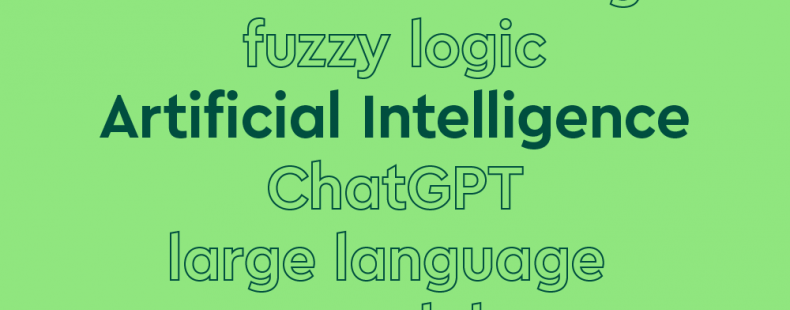Artificial intelligence, or AI, has been a hot topic of late, but what is it? And how does it work? In this article (which was written by a real person and not AI, just to be clear), we will go over some of the key terms connected to AI and related computer processes. We are going to break down the technical jargon to describe how these processes and programs work in real terms. As you will see, while the concept of AI sounds very complex and even mystical, it actually follows some very simple, easy-to-follow principles.
artificial intelligence (AI)
Artificial intelligence, or AI, is “the ability of a computer or robot to perform operations and tasks similar to learning and decision-making in humans, such as speech recognition or question answering.” While AI is hitting the headlines these days, the idea has been around for a long time; the expression was first recorded around 1955.
machine learning
A key component of human intelligence is the ability to learn. Even when faced with a new, completely unforeseen problem, humans are able to use context and intuition to solve it. Machine learning is the same capacity in computers. Instead of being directly programmed to solve a specific problem, machine learning algorithms use extrapolation and context to find a solution.
evolutionary algorithm
One example of how AI is able to solve problems is through the use of evolutionary algorithms. An algorithm is a set of rules for solving problems. An evolutionary algorithm is able to find solutions using the principle of “survival of the fittest”—like in biological evolution. Solutions that don’t work are discarded, while ones that do work are tested and improved upon.
dataset
A dataset is “a collection of data records for computer processing.” It’s the set of information that an algorithm uses to make decisions.
deep learning
Another way AI solves problems is through the use of deep learning. Humans learn by example. We watch someone complete a task, and then we copy them. Deep learning is the same principle, applied to computer algorithms. For example, when you complete a CAPTCHA that asks you to identify crosswalks, that data can be used to “teach” self-driving car algorithms.
fuzzy logic
Typically, computers make decisions based on choosing between two possible answers, “true” or “false,” a process known as Boolean logic. Fuzzy logic is a way to allow for more possible answers based on assumptions, heuristics, or less-precise parameters (hence the “fuzzy” part of fuzzy logic). This allows AI and other algorithms to make decisions even when the data isn’t perfectly clear, much like humans do in the real world.
neural network
One possible method of developing an AI system is to model it (loosely) after the human brain. This is known as a neural network. Within a neural network, there are a series of nodes, or data points, that are densely connected and layered. Each layer of a neural net processes and weighs the information, allowing for a lot of data to be processed in a relatively small space with little human intervention.
prompt
When used as an adjective, prompt means “punctual” or “without delay.” But in technology, a prompt is essentially the problem given to an algorithm to solve. This can be in the form of text, code, or even an image, such as “Write a romcom screenplay in Shakespearean English.”
task automation
A possible application of AI technology is to do task automation. This is the ability to use algorithms to do tasks—such as scheduling or writing emails—automatically, rather than having the task be done by humans.
chatbot
One popular application of AI technology currently is in the form of a chatbot. A chatbot is a service that uses text to communicate and have a conversation. It looks like a typical messaging service, except on the other end is an algorithm instead of another person.
large language model (LLM)
A large language model (LLM) is a common form of deep learning that uses a dataset of massive amounts of text and images to learn, communicate, and make decisions. LLMs use huge sections of the internet as a dataset.
natural language
Large language models allow chatbots to communicate using natural language, or language that approximates human speech or writing. Computer algorithms are often very literal, but those that can understand and apply natural language take advantage of multiple semantic meanings of words, such as how the word cool can mean both “cold” and “excellent.”
ChatGPT
ChatGPT is one consumer-facing deep learning model. GPT is an acronym for “generative pre-trained transformer,” meaning that it is able to generate responses (it is generative) based on a large language model.
Turing test
The goal of all AI and deep learning models is to pass the Turing test. Created by legendary mathematician Alan Turing, the Turing test is the ability of a chatbot to trick a human user into thinking it is human. While none of the AI or deep learning models on the market today, such as Google’s Bard or ChatGPT, entirely pass the Turing test just yet, they may someday soon.
Flaunt your natural human intelligence by taking the quiz!
How well do you know artificial intelligence? Test your knowledge with our tech-savvy quiz here.














